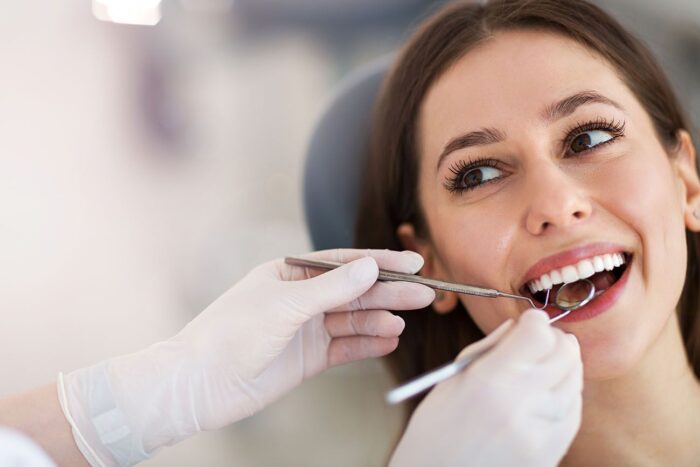Crooked teeth can negatively impact your oral health in several ways. They can make it more difficult to clean your teeth properly, increase your risk of tooth decay and gum disease, and cause problems with your bite and jaw alignment.
Fortunately, several treatment options are available to address crooked teeth and improve oral health. Therefore, if you have crooked teeth, talk to your dentist today about your options and develop a treatment plan that meets your needs and goals.

Difficulty Cleaning Your Teeth
Crooked teeth can make it more difficult to clean your teeth properly. When teeth crowd or overlap, reaching all surfaces with your toothbrush and floss can be challenging. Additionally, this can lead to a buildup of plaque and bacteria, which can cause tooth decay and gum disease.
Increased Risk of Tooth Decay and Gum Disease
With crowded or misaligned teeth, it’s easier for food particles and bacteria to become trapped in the crevices between your teeth. This can lead to an increase in plaque buildup, which can cause tooth decay and gum disease. In addition, crooked teeth can cause pockets between the teeth and gums, which can be difficult to clean and lead to gum disease.
Problems with Your Bite and Jaw Alignment
Crooked teeth can also cause problems with your bite and jaw alignment. When teeth are misaligned, it can pressure certain teeth and cause them to wear down more quickly. As a result, this can lead to problems with your bite, including pain and discomfort when chewing or speaking. In some cases, crooked teeth can even cause temporomandibular joint (TMJ) disorders, which can cause pain in your jaw joint, ear, or neck.
Treatment Options for Crooked Teeth
If you have crooked teeth, several treatment options are available to address the issue and improve your oral health.
Braces: Braces are one of the most common treatments for crooked teeth. They apply pressure to your teeth over time, gradually moving them into the correct position. Additionally, these can be made from metal or clear materials and customized to fit your needs.
Clear Aligners: Clear aligners are a newer alternative to traditional braces. They use a series of clear, removable trays to shift your teeth into the correct position gradually. Furthermore, clear aligners are less noticeable than traditional braces and are often more comfortable to wear.
Retainers: Retainers are typically used after braces or clear aligners to help keep your teeth in their new position. Depending on your dentist’s recommendation, you can wear them at night or for a few hours daily.
Tooth Extraction: In some cases, it may be necessary to remove a tooth to make room for the rest of your teeth to move into the correct position. As a result, an extraction is only necessary for severe cases of overcrowding.
Jaw Surgery: If your jaw is misaligned, jaw surgery may be necessary to correct the issue. However, this is typically only done in more severe cases and is usually only recommended as a last resort.
